Ecommerce supply chains must be dynamic, evolving to continually meet the various challenges and opportunities involving transportation costs, labor, management expectations, financial goals and customer demands. However, many fulfillment centers spend much of their time implementing reactive tactics without ever thinking through the strategy of what they are trying to achieve. The terms tactic and strategy are often confused and incorrectly used interchangeably.
- Strategy - defines your ecommerce supply chain management teams long-term goals. Additionally, a strategy ensures the goals are in alignment with the business objectives and how you’re going to get there. The most effective ecommerce supply chain strategies are integrated with the company’s overall business plans and goals.
- Tactics - are more specific activities involving the assessment of the problem, the development of options and a sound decision to proceed. Tactical decisions are then implemented by developing project plans and tasks, using appropriate best practices, identifying the resources needed to achieve the result of the strategy and starting initiatives to implement.
In short, effective supply chain management strategies are the destination you’re trying to reach. Tactics are the activities that you need to do to get there. No two companies will have the same supply chain strategies and tactics. We recommend performing a strategic assessment of your ecommerce supply chain and then identify customized tactics to fit your business objectives.
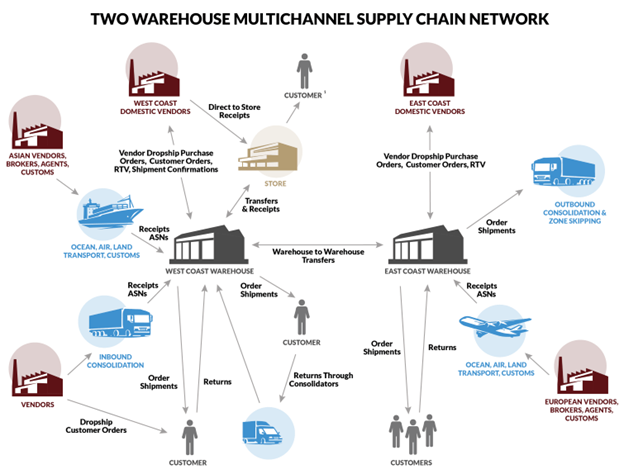
Ecommerce Supply Chain and Operations Assessment
Defining your strategies starts with an assessment of your business operations within your supply chain and fulfillment centers. This warehouse assessment should include an in-depth audit of your entire operations, use of labor, fulfillment processes, distribution sites including the design, and management systems being utilized.
These operational assessments will help you determine if your operations are as efficient as possible. The goal is to identify ways in which you can improve customer service while driving down costs.
First, assess your processes and costs, then answer these questions:
- How can you maximize your labor dollars without increasing headcount in your distribution center to receive product and fill orders?
- How can you ship to the customer at the lowest cost, while reducing time in transit?
- How can you improve warehouse inventory management and accuracy in a more timely manner??
- How can you maximize, or increase, your distribution centers available utilization and storage capacity with your current sites?
These questions address universal challenges faced by all ecommerce supply chains.
7 Ecommerce Supply Chain Strategies to Consider
Each company’s Supply Chain and challenges are different, so strategies are not a one-size-fits-all game. Here are 10 major strategies we are consulting on with multichannel ecommerce, wholesalers, and distributors.
1. Make the inbound supply chain more efficient
One of the major challenges ecommerce businesses face is getting inbound products on-time and processed efficiently. Your objective should be to receive the product so that it can flow through to put away or be cross docked to fill your customers orders.
- Assess what current problems exist and what costs are absorbed in reworking non-compliant receipts in both the fulfillment center and back office.
- Determine which vendors cause most of the delay and cost problems.
- Implement tighter warehouse management systems between vendors and your company.
- Consider implementing EDI if you haven’t already, this leads to reduced cost by improving available data.
- Implement more robust vendor compliance programs that support your inbound needs.
- Determine what inbound and fulfillment activities such as bagging, labelling, or tagging can be done cheaper and faster upstream in your supply chain.
- Determine how receiving dock and truck yard congestion can be reduced or eliminated.
2. Lower shipping cost and delivery time
Your customers expect you to compete with major retailers and the Amazon’s of the world. This means faster order fulfillment and reduced freight time in transit. Be responsive by measuring and assessing the current service level, as well as negotiating stronger freight rates and options. Continually perform a freight audit to ensure there are not missed opportunities. This is especially true for companies that utilize the USPS for final mile delivery.
Investigate if your e-commerce supply chain would benefit from multi distribution center operations. Make sure to take into account costs to set up the operation in terms of additional facilities, staffing, and management.
3. Increase the capacity and utilization of your distribution center
Moving to a new center is not always the best option for many companies. Performing a warehouse assessment will help to identify areas that could be improved. Look for areas where the racking or shelving is underutilized, and space is lost or wasted. Changes to storage methods can improve the utilization and capacity.
Also consider how the existing layout affects the overall flow and use of space in the distribution center. Assess the overall layout, product flow, labor efficiency, storage and material handling equipment used. Do not forget to consider worker safety or warehousing system utilized.
Without an efficient layout and design in your distribution center you can’t address the bottlenecks and inefficiencies that drive up labor costs. By addressing some basic principles, your company can delay a move to a new facility. Follow these layout and design principles to increase efficiency and productivity.
4. Eliminate paperwork and improve real time data
It should be no surprise that paperwork in a warehouse is inefficient and fraught with problems. Ecommerce supply chains feed of real time data and information. Select and implement a more robust order management system, inventory management system, or warehouse management system.
The use of barcode technologies will eliminate paper throughout the operations and allow for tighter inventory tracking of raw materials and finished goods. These systems will allow you to easily track and understand the “what,” “who,” and “when” for all activities.

Barcode and scanning technologies can be implemented in most all areas such as receiving, put away, replenishment, picking, packing, shipping/manifesting, returns and reverse logistics, cycle counts, value-add functions, and labor tracking.
5. Manage labor more effectively
Most fulfillment centers and warehouses rely on manual labor, which is not cheap. The cost of automation and robotics for distribution centers has come down. Many ecommerce supply chains can afford to implement automated solutions for various parts of the fulfillment operations.
If you can’t achieve a favorable return on investment in applying automation, managing labor more effectively should be a major strategic goal for your fulfillment center. Consider how changes in labor can lower your cost per unit, line, order and carton shipped.
6. Increase the overall throughout of orders
Order picking is one of the most important functions in your ecommerce operations. Order accuracy and timely order fulfillment are keys to a successful customer experience. Picking and packing are generally the two areas where companies can also gain the most significant labor cost savings.
For many ecommerce distribution centers, automated solutions to support picking often include:
- Voice picking
- Pick-to-light and put-to-light.
- Goods to person technologies
- Robotics and co-bots
These automated solutions often provide a favorable return on investment. To take advantage of these solutions, they must be designed to your facility, products and processes.
7. Use of 3PLs versus internal fulfillment
Ecommerce 3PLs have become more flexible and sophisticated of the years. Often implementing more robust systems and automation than what individual companies could invest. This is a significant benefit to companies that are up against making similar decisions.
Many ecommerce companies are facing questions, such as:
- Should your company continue to maintain and operate its own fulfillment facility?
- Can you hire and manage labor as effectively as a 3PL?
- Can you put off having to invest in systems or facilities by utilizing a 3PL?
- Can you achieve faster delivery with multiple distribution centers from a third-party logistics (3PL) provider?

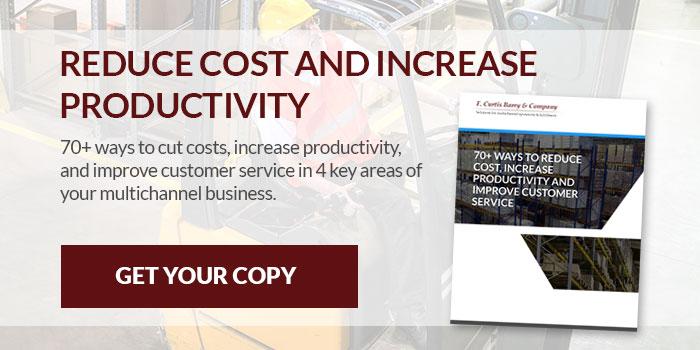
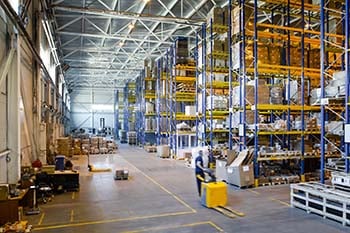
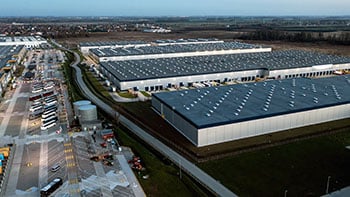
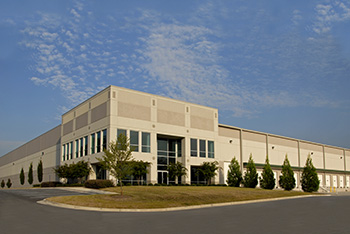
SHARE